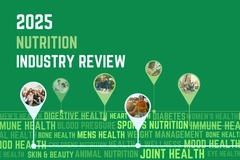Microbe-driven T cells enhance breast milk’s protective role, study reveals

Salk Institute (US) immunologists have mapped the migration pattern of immune cells from breastfeeding mothers to infants, before and during lactation. They discovered that immune cells — T cells — are abundant in the mammary glands during pregnancy and breastfeeding, with some relocating from the gut. They say these cells likely support both maternal and infant health.
Based on animal research and human milk and tissue samples, the discovery may help illuminate the advantages of breastfeeding, present new solutions for mothers unable to breastfeed, and inform dietary decisions that elevate breast milk production and quality.
“By investigating how immune cells change during pregnancy and lactation, we were able to find lots of exciting things — notably, that there’s a significant increase in immune cells in mammary tissue during lactation, and the increase in immune cells requires microbes,” says assistant professor Deepshika Ramanan, senior author of the study.
Mammary gland immune landscape
The researchers point to certain features within the mammary gland immune landscape, based on milk content research. For instance, they note that the presence of antibodies in breast milk means that antibody-producing immune cells called B cells must be present.
However, the study authors note that few have looked directly at immune cell activity within the mammary gland itself, because most breastfeeding studies focus on the relationship between milk content and infant health.
These studies, including Ramanan’s previous work, have demonstrated that babies receive essential gut bacteria and antibodies from their mother through breast milk, which lays the critical foundation for their developing immune system.
Still, significantly less is known about the changes to the mother’s body during this time.
“What’s really exciting is that we didn’t just find more T cells in mammary glands, we found that some of these T cells were actually coming from the gut,” says first author Abigail Jaquish, a graduate student researcher in Ramanan’s lab.
“We think they are likely supporting mammary tissue in the same way they typically support intestinal tissue.”
It begins with the gut
The study began by examining mouse mammary gland tissues at various stages pre- to post-lactation. A comparison of these samples revealed that three different types of T cells were proliferating: CD4+, CD8αα+, and CD8αβ+.
The team explains that these T cell subtypes represent a special immune cell class called intraepithelial lymphocytes. These are typically found in mucosal tissues, which are soft tissues like the intestines or lungs that are exposed to substances from the outside environment.
Because these tissues are more vulnerable, intraepithelial lymphocytes act as “resident" immune cells, “stationed on-site and ready for action.”
The researchers observed these CD4+, CD8αα+, and CD8αβ+ T cells lined the mammary epithelium in the same way they would line the epithelium of other mucosal tissues. Furthermore, these T cell subtypes bore gut-resident surface protein fingerprints — pointing to T cell migration between the intestines and mammary glands.
Together, these changes facilitated a mammary gland transition from non-mucosal to mucosal tissue in preparation for lactation, where it would become exposed to the outside environment, including microbes from the mother’s skin and the infant’s mouth.
Same effects in humans?
To determine if this phenomenon also happens in humans, the researchers investigated databases of human breast tissue and milk samples from the Human Milk Institute at University of California, San Diego, US. This revealed the human equivalents of these intraepithelial lymphocytes show the same trends.
A comparison of mammary glands of mice living in normal and germ-free environments revealed that all three T cell subtypes were expressed significantly more in mice exposed to microbes.
This discovery suggests that maternal microbes are modulating the number of T cells created during lactation, which can then impact the strength of the mammary gland immune barrier.
Overall, microbes led to an increase in T cell production. T cells then relocate from the gut to mammary glands, and the mammary glands switched from non-mucosal to mucosal tissues.
“We now know so much more about how the maternal immune system is changing during this critical time,” says Ramanan. “We can use this information to start exploring the direct effects of these immune cells on both maternal and infant health.”
Looking ahead at gut-breast axis
The scientists believe that hormones influence these various changes and that the overall goal is to protect the mother from the outside world and related infection. But this led them to ask how they influence lactogenesis, milk quality, and maternal and baby health.
“There’s so much more research to be done in this area — we’re just getting started,” says Jaquish. “If we’re seeing a connection between the gut and the mammary gland, what other interactions might be happening in the body? And what else could be impacting the milk that we’re passing on to our offspring?”
The findings are published in the journal Nature Immunology.












